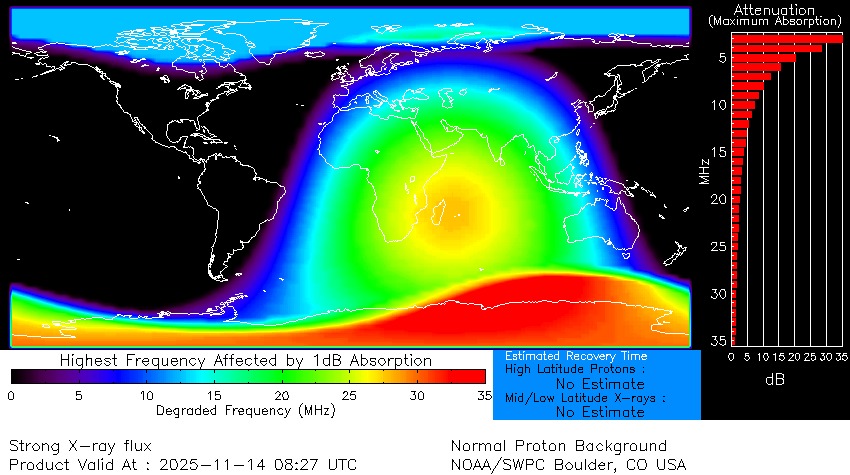Coronal mass ejection released during the X-class solar flare eruption. (Image credit: NOAA Space Weather Prediction Center)
The sun fired off another major eruption today (Nov. 14), unleashing an intense X4-class flare, the second-most powerful eruption of 2025 so far, from the same hyperactive sunspot region that produced this year’s record-setting X5 blast just days ago.
This dramatic outburst comes as AR4274 approaches the sun‘s western limb, meaning it is about to rotate out of view. This ‘parting shot’ eruption from one of the most prolific flare producers of Solar Cycle 25 was accompanied by a coronal mass ejection (CME). But due to the position of the sunspot region so close to the solar limb (the ‘edge’ as we see it), any associated CME would be less likely to be directed toward Earth. Space weather forecasters are monitoring coronagraph data to determine whether any portion of the released CME could clip our planet in the coming days.
You may like
What is an X-flare?
Solar flares are ranked in ascending strength from A, B, C and M up to X, with each letter representing a tenfold increase in intensity. X-class flares are the strongest eruptions and the number following the X indicates how powerful the event is. An X.4 puts today’s flare in the upper tier of solar outbursts.
Unlike CMEs, which launch clouds of magnetized plasma into space, solar flares release bursts of electromagnetic radiation that reach Earth in about 8 minutes. Today’s flare rapidly ionized the upper atmosphere, disrupting long-range radio communications on the sunlit portion of Earth.
Radio blackouts associated with the X4 solar flare on Nov. 14. (Image credit: NOAA Space Weather Prediction Center)



